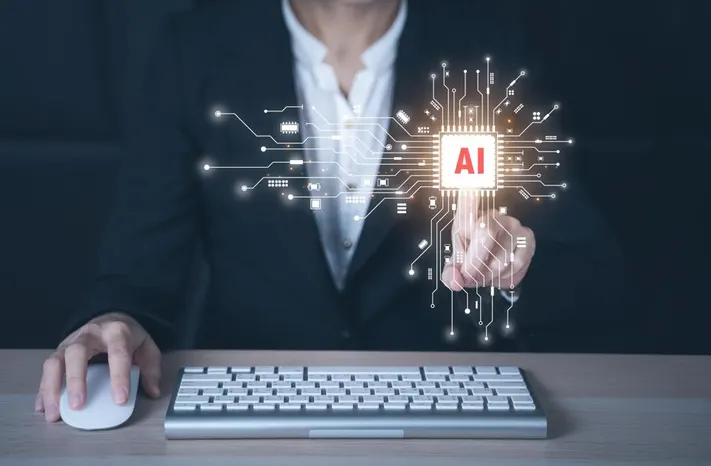The Circular Economy’s blind spot: Why do most legacy industries face challenges in closing the loop?
- Trang Nguyen

- 20 août
- 3 min de lecture
We see glossy PDFs everywhere, with bold headlines, “Net Zero by 2050” promises, and “circular initiatives” scattered across the pages. And yet, only 6.9% of the materials entering the global economy are from recycled or secondary sources, that figure has slipped from 9% in 2018 (The Guardian). That means more than 90% of the materials that we take from the Earth never find their way back into productive use.
This is not because the idea of circularity does not work, it is because legacy industries are trying to fit a circular economy into a linear business model. Meanwhile, resources are getting scarcer, regulations are tougher, customers expect brands to be more sustainable and even more innovative. And if you are still operating in a strictly linear way, you are probably leaving money (and reputation) on the table.
The Circular Economy’s hidden truths
Before diagnosing the industry-specific barriers, it is worth uncovering a few realities that rarely make it into the glossy reports. These explain why, despite endless “circular” headlines, the situation is barely moving.
Even if we recycled everything that is recyclable, global circularity would max out at just 25% (The Guardian, 2025). Recycling is a pit stop - not the destination
Maintenance, repair, leasing, and extending product lives already create massive circular flows. Yet they are invisible in most metrics. Including them pushes circularity as high as 27%, but they only account for 1.4% of global GDP (arXiv, 2025)
Downcycling is real. Plastic “recycling” often yields lower-grade materials that cannot be re-recycled (Oceana). This slows the move to true circularity
In 2022, 62 million tonnes of e-waste were generated. Only 22% was properly recycled, and that could drop to 20% by 2030 (AP News). That waste contains $91 billion worth of precious metals - an asset pool we are simply throwing away
Only 27% of countries include circular economy measures in their climate commitments (Reuters, 2025), meaning most nations treat it as optional
The Circular Economy has a “last mile” problem
These hidden truths reveal something deeper: circularity isn’t failing because the infrastructure doesn’t exist; it is failing in the “last mile”. Think of it like in logistics: the most expensive and complex part of delivery is getting the package to your door. In the circular economy, the “last mile” is integrating reuse, repair, and recovery into core business models, not just pilot projects or CSR campaigns. Right now, circular flows exist, but they rarely reach the scale, integration, or profitability needed to make them mainstream, due to some reasons could be mentioned:
Materials are locked in complex products that can’t be profitably recovered
Supply chains are built for throughput, not retention - making reuse more expensive than disposal
Short-term ROI pressures kill long-term regenerative design
The playbook for legacy industries
Solving the last mile challenge requires more than ambition; it demands a practical playbook, with a set of operational moves that make circularity economically viable, scalable, and embedded in the P&L. And the companies making real progress are the ones turning principles into muscle memory.
Design for durability & repair: Think products that are easier to fix, upgrade, and keep in use longer

Philips, now Signify, doesn’t just sell lightbulbs anymore. Through its lighting-as-a-service model, it installs, maintains, and upgrades lighting for clients - keeping products in circulation instead of sending them to landfills (Image: Signify) Take-back & refurbishment programs: Collect your products at the end of their life, give them a refresh, and put them back on the market

Caterpillar remanufactures old engine components, saving materials and cutting costs; and customers love the lower price tag (Image: CAT) Product-as-a-Service models: Instead of selling ownership, sell the use of the product. This way, it comes back to you when it’s done

Rolls-Royce’s Power-by-the-Hour service - airlines pay for hours of engine use, while Rolls-Royce keeps the engines, maintains them, and recycles parts (Image: Aviation News) Closing the loop in the supply chain: Work with suppliers to reuse and recycle your own materials

Interface turns old carpet tiles into raw material for new ones, creating a closed-loop nylon system that’s cheaper and greener (Image: Interface) Digital tracking & transparency: Use technology to keep tabs on your products’ entire lifecycle

Fashion brands are now using digital product passports - QR codes that track a garment’s history and make it easier to recycle or resell (Image: Audaces)
That said, the emphasis is now moving away from “sell more products” and toward “deliver more value with fewer resources”.



